How to Make Almond Milk + Almond Milk Recipes
14
Published Jun 07, 2021, Updated Mar 18, 2024
This post may include affiliate links. Thank you for your support.
Homemade almond milk is so easy – just soak, blend and strain! In this post I’m breaking down how to make your own almond milk and sharing recipes for how to use it!
There are so many non-dairy milk alternatives out now! I’ve tried (and enjoyed) a ton of them, but almond milk is still my go-to for cooking and baking!
Why? In my opinion, it has the most mild, diverse flavor and it works in practically every recipe!
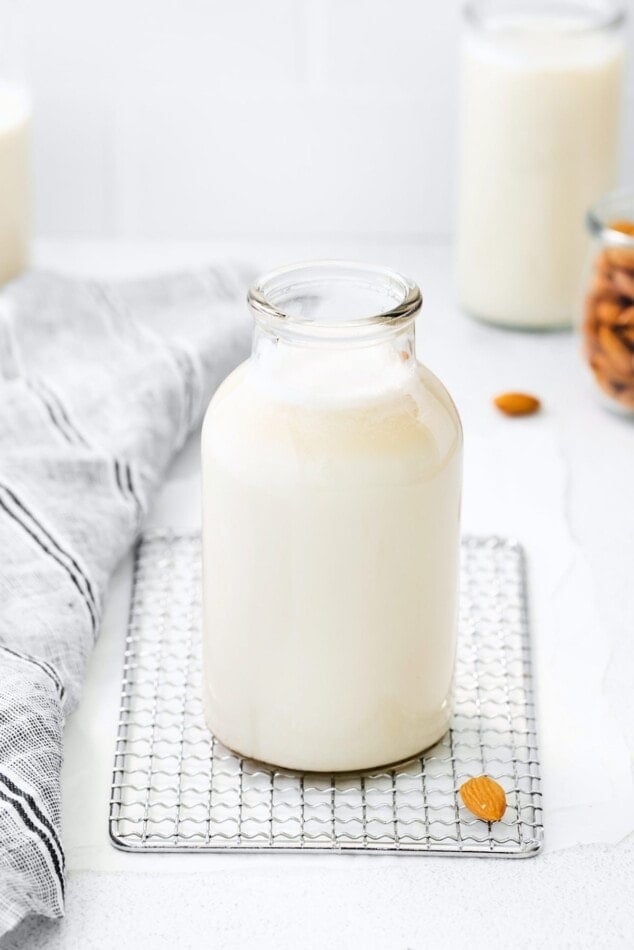
I love using almond milk in everything from sweet breakfasts to savory main dishes to desserts. Before we jump into some recipes using almond milk, I thought I’d be fun to share some facts.
Health Benefits of Almond Milk
Is almond milk good for you? The short answer is yes!
Almond milk is great for anyone who has a dairy intolerance, wants to cut out dairy or wants a lower calorie milk option. Almond milk is rich in Vitamin E and healthy fats, and some brands fortify their almond milk with vitamin D and calcium as well (be sure to read your labels because many commercial brands add thickeners, gums and sweeteners too). I personally reach for the unsweetened almond milk to stay away from added sugars or make my own using the recipe below.
Almond milk is a great dairy-free alternative for a variety of recipes. It’s low in calories and rich in vitamins and minerals. While it’s easy to grab a carton from your local grocery store, I prefer homemade almond milk! The taste is exponentially better and it’s so simple to make.
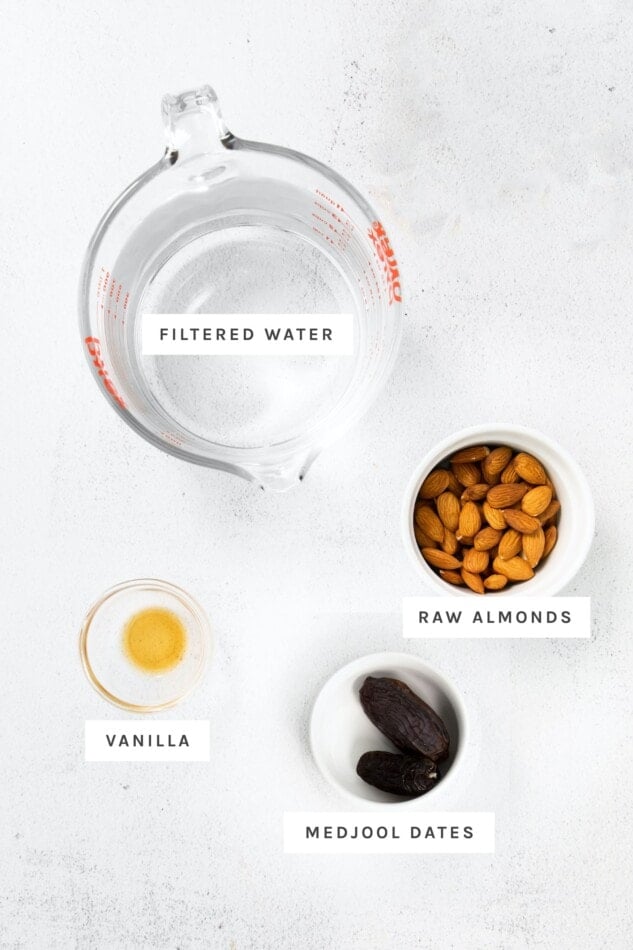
Here’s What You Need:
- raw almonds – grab organic almonds if possible!
- filtered water – you’ll soak and blend the almonds in water. I like to use filtered water to make sure you don’t get any weird flavors!
- vanilla extract – optional but I love a hint of vanilla in my almond milk.
- pitted medjool dates – again, optional but the medjool dates add a slight sweetness to the homemade almond milk!
- sea salt – just a pinch to bring all of the flavors together.
tip! Add a little vanilla extract and pitted dates for a slightly sweetened vanilla almond milk… my favorite way to enjoy homemade almond milk!
Step-By-Step Process
- Soak almonds: Add almonds to a jar and cover with water. Let soak for 6-8 hours (or overnight). Drain, rinse and discard soaking water.
- Blend: Add soaked almonds, 4 cups of fresh water, sea salt, vanilla and dates, if using into a high powered blender and process on high for 3 to 4 minutes or until finely puréed. The nuts should be broken down into a very fine meal and the liquid will be white/milky.
- Strain: Strain the mixture through a nut milk bag into a bowl, squeezing hard until only solids remain.
- Store: Milk will keep in a sealed container in the fridge for about five days. Shake before using.
- Use or discard the almond pulp: What’s left in your nut milk bag is called almond pulp and there are so many fun things you can do with it. You can use the almond pulp to make almond meal and then make my almond flour crackers or make some almond pulp chocolate chip bars.
How to Use Almond Milk
Pretty much the same way as you would cow’s milk! I like to almond milk in smoothies, overnight oats, baked oatmeal, main dishes, desserts and as milk for cereal! It’s a great ingredient to experiment with. You can drink it alone or try it in a new recipe… get creative!
I’m sharing my favorite recipes that use almond milk below but the options are truly endless!
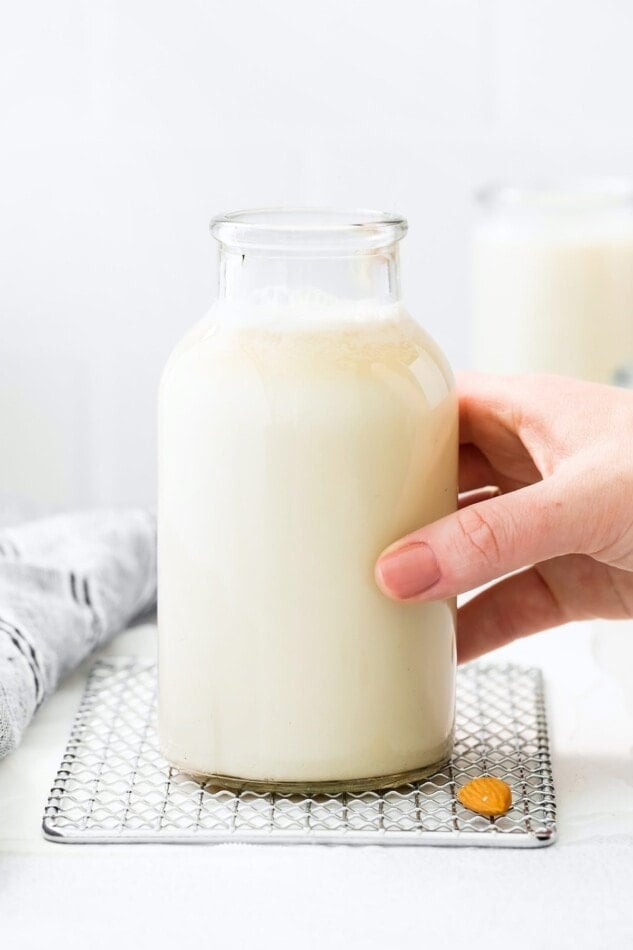
Using Almond Milk For Cooking
Almond milk is a great substitute for cow’s milk while cooking. I often swap out cow’s milk for almond milk and I don’t notice a flavor difference. My general rule of thumb with cooking is that most milks can be used interchangeably! Of course coconut milk has a more pronounced flavor and can be thicker than other milks but in general, swap away!
Can I Use Almond Milk Instead of Milk in Baking?
Yes, but your product might turn out slightly different than if you use cow’s milk. You may already know this, but baking requires crazy precision! If a recipe has been created and tested using almond milk, you’re in the clear!
If a recipe has been created and tested using cow’s milk, you can still use almond milk but you might notice some changes in appearance and texture. In my opinion, it’s not a huge deal if a muffin doesn’t rise as much or has a denser texture, but you can decide for yourself. Here is a helpful article that breaks down the difference of using different types of milks for baking muffins. Do some experimenting with your baked goods to see what works!
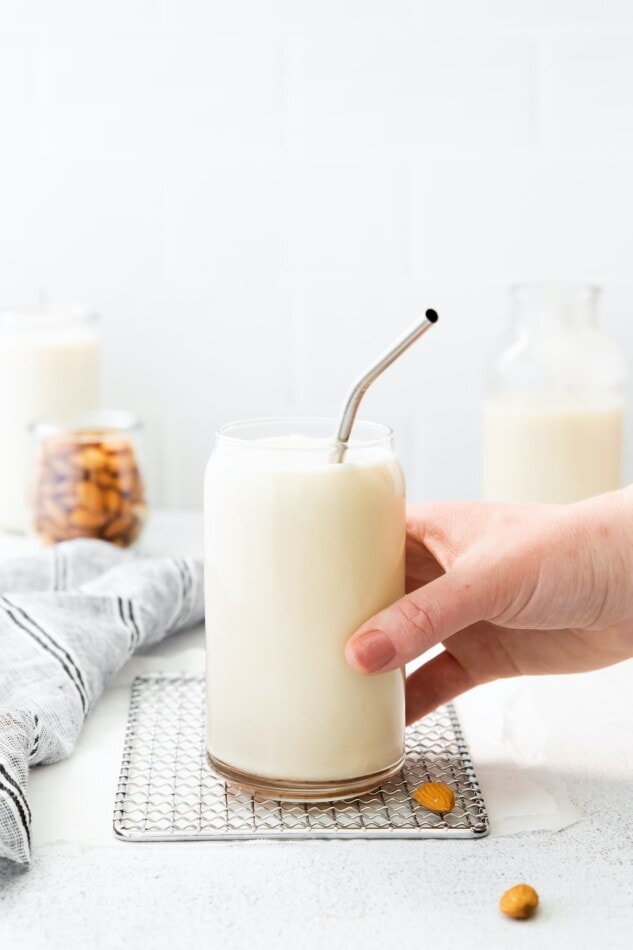
How to Store
You can store almond milk in an airtight container in the refrigerator for up to 5 days. Shake milk before serving as the contents may separate a bit during storage.
On to the recipes! I have sooooo many recipes that use almond milk on my site, so I’m excited to share some of my favorites here for you!
Breakfast Recipes with Almond Milk
Main Meals Made with Almond Milk
Desserts Made with Almond Milk
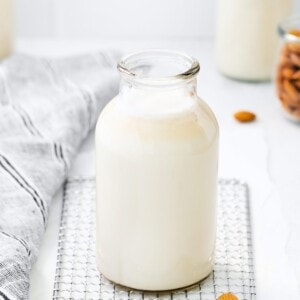
How to Make Almond Milk
Ingredients
- 1 cup raw almonds, ideally organic
- 4 cups filtered water + more for soaking
- 1 teaspoon vanilla, optional
- 2 pitted medjool dates, optional
- Pinch of sea salt
Instructions
- Soak almonds: Add almonds to a jar and cover with water. Let soak for 6-8 hours (or overnight). Drain, rinse and discard soaking water.
- Blend: Add soaked almonds, 4 cups of fresh water, sea salt, vanilla and dates, if using into a high powered blender and process on high for 3 to 4 minutes or until finely puréed. The nuts should be broken down into a very fine meal and the liquid will be white/milky.
- Strain: Strain the mixture through a nut milk bag into a bowl, squeezing hard until only solids remain.
- Store: Milk will keep in a sealed container in the fridge for about five days. Shake before using.
- Almond pulp: Save almond pulp for another use or discard.
Nutrition
Nutrition information is automatically calculated, so should only be used as an approximation.

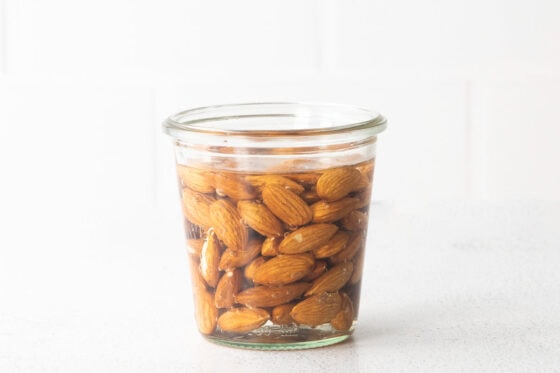

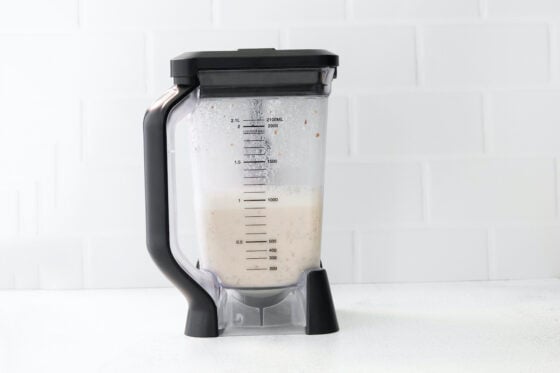
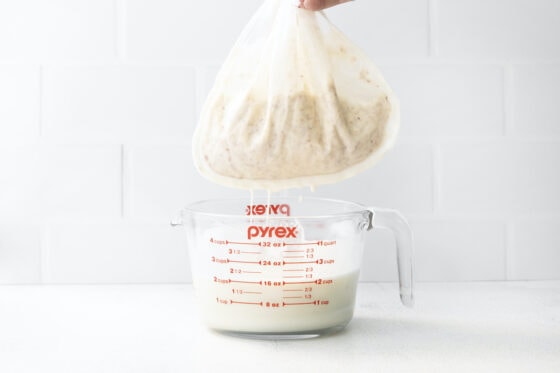
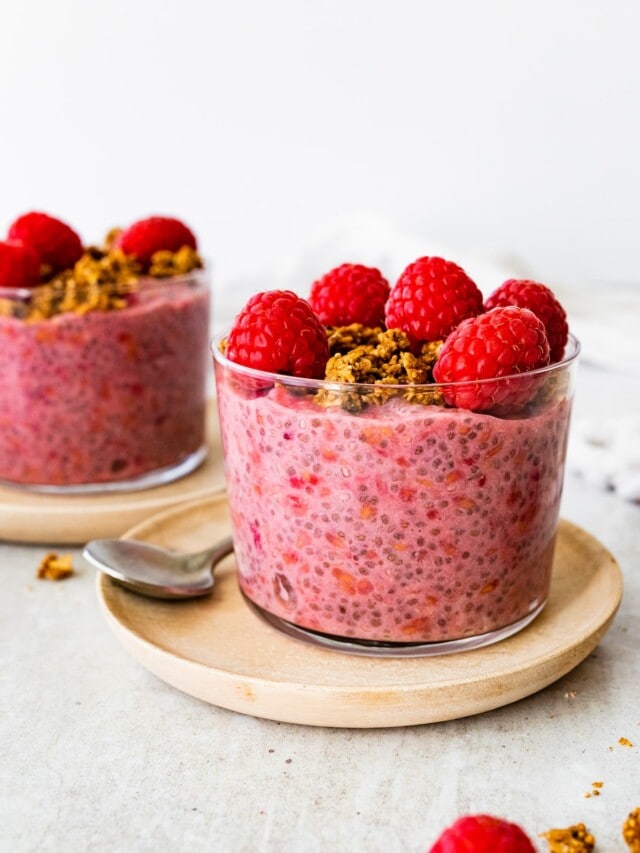

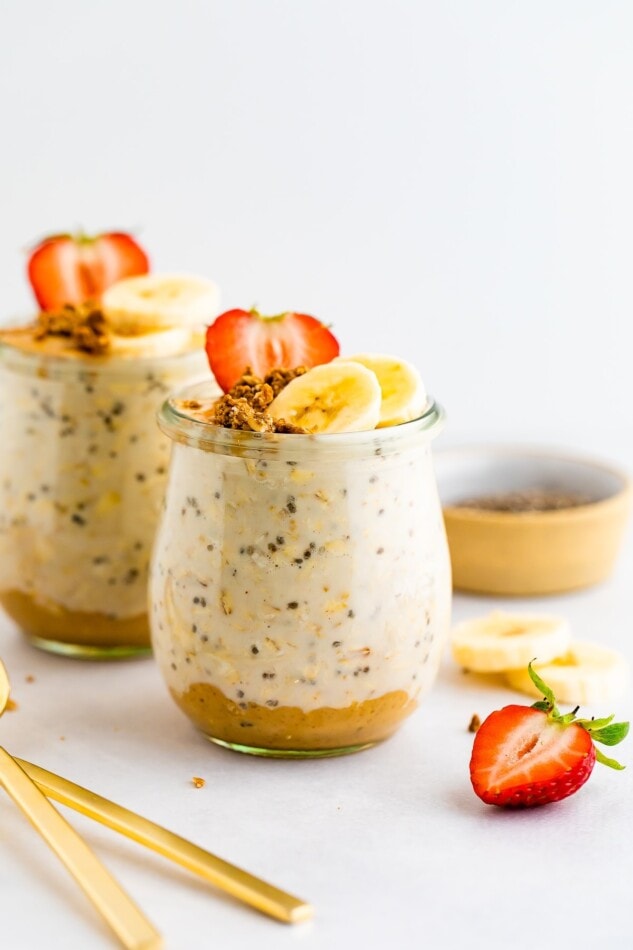
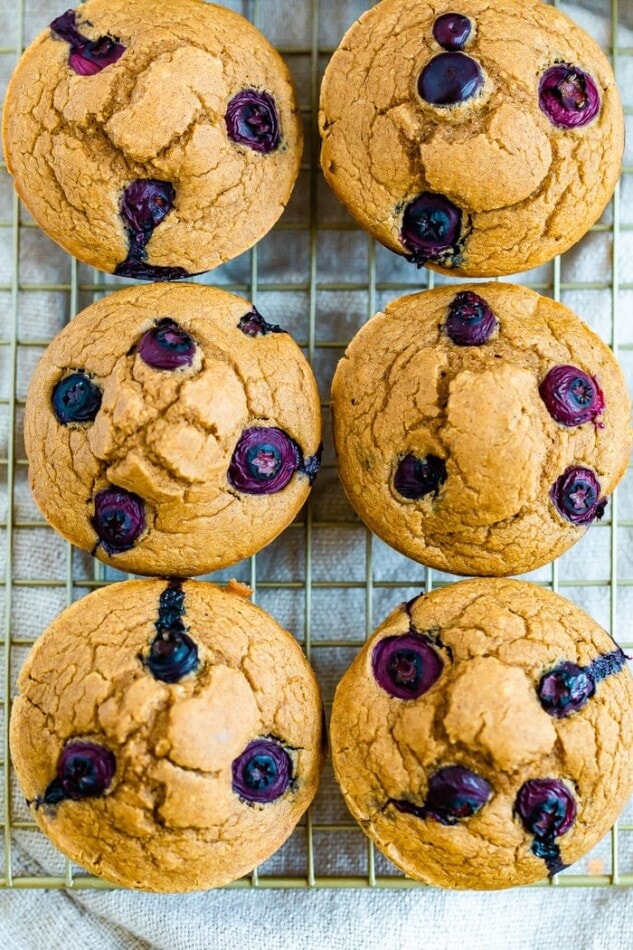
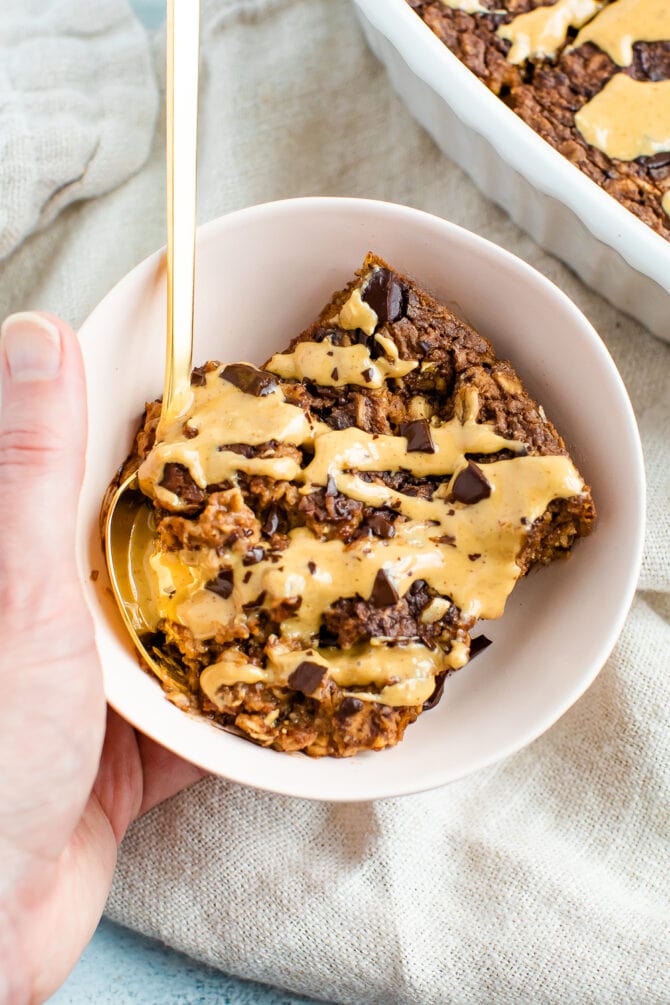
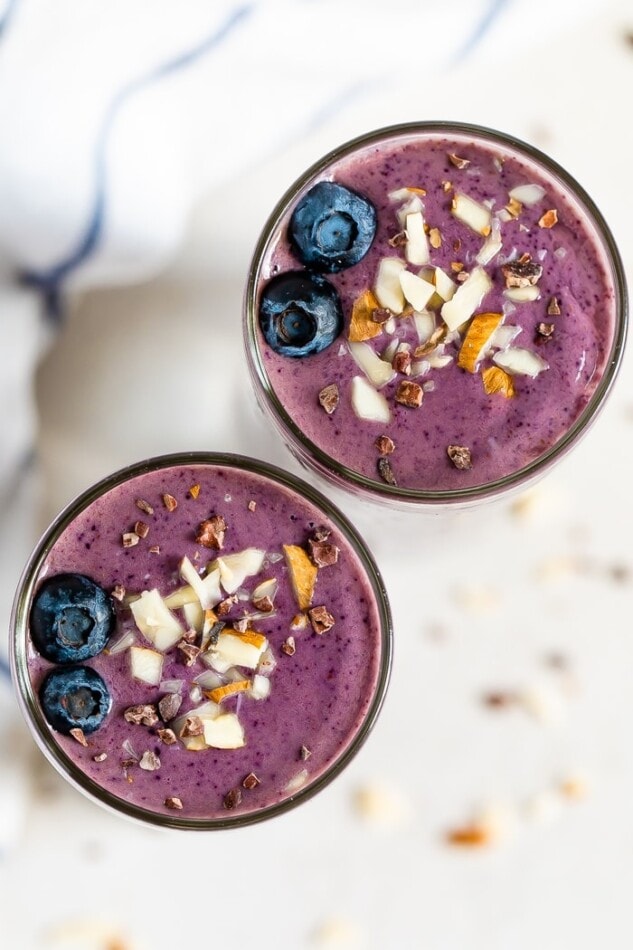
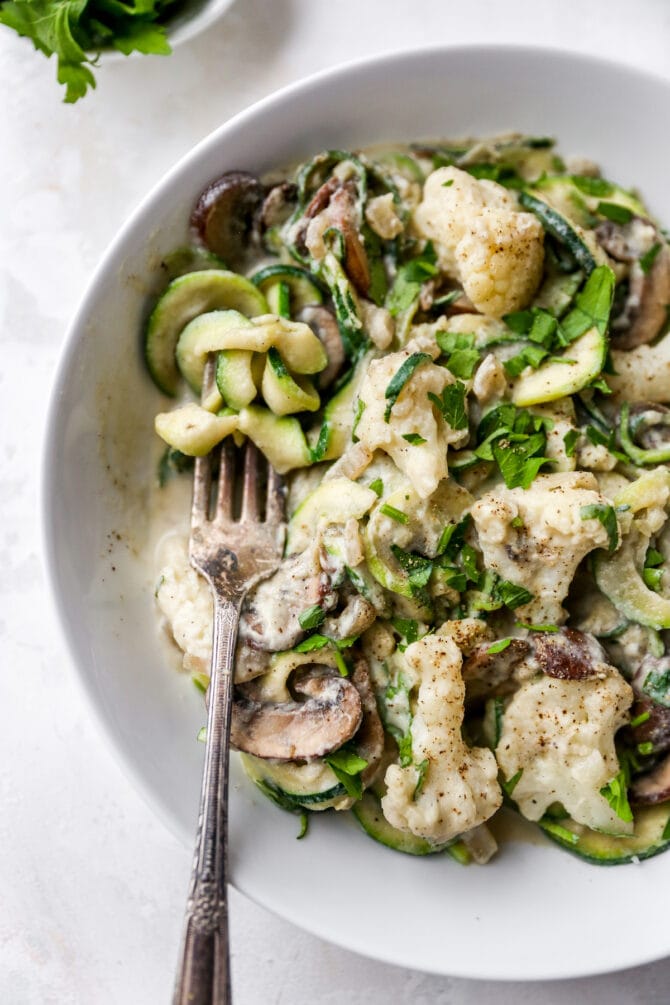
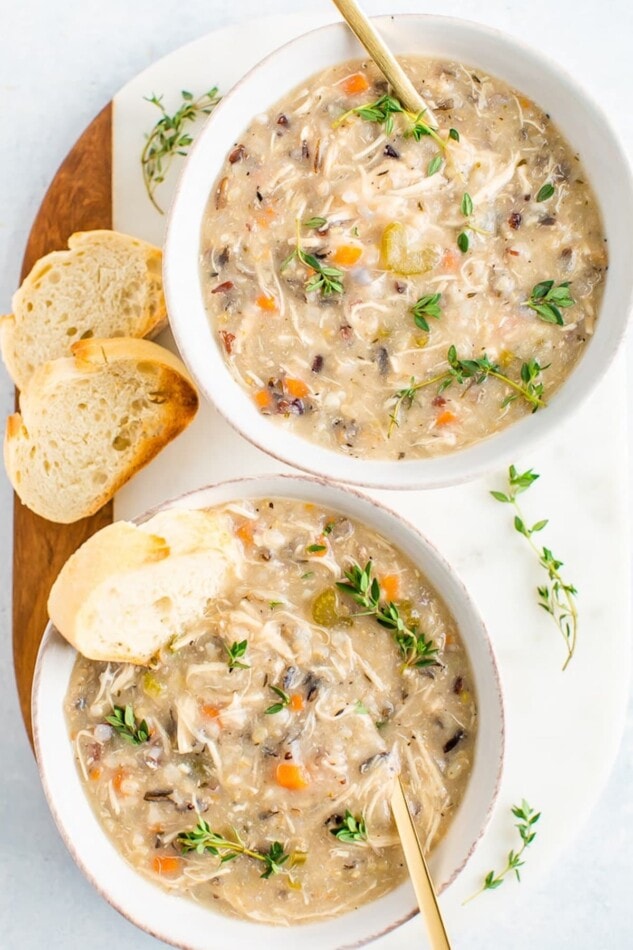
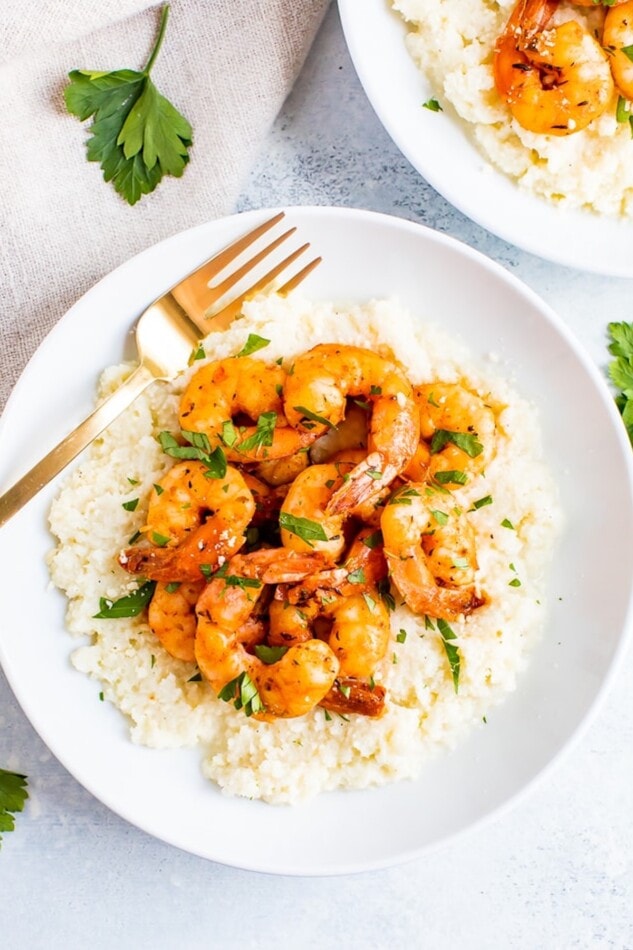
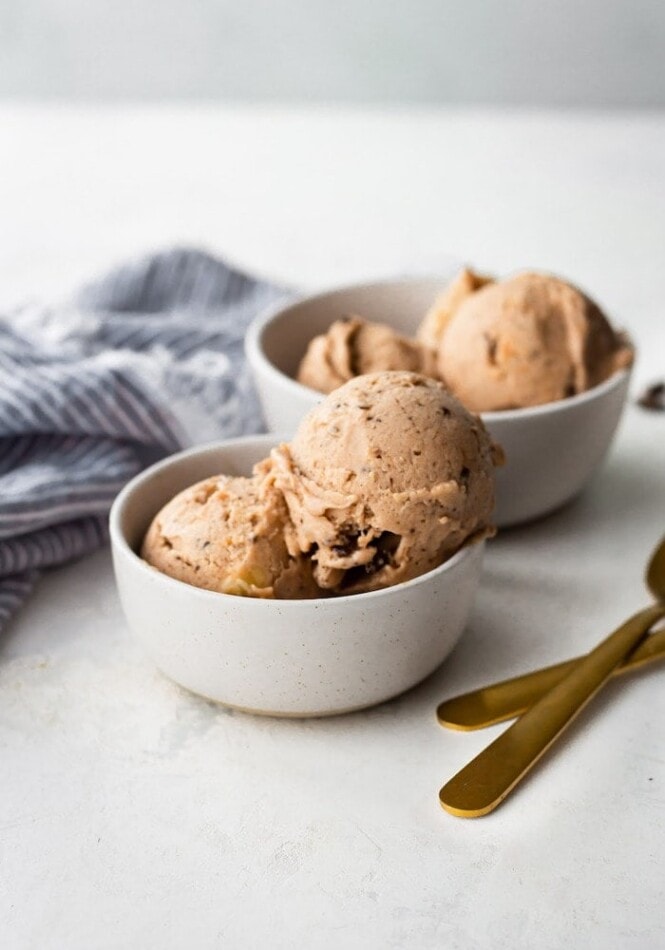
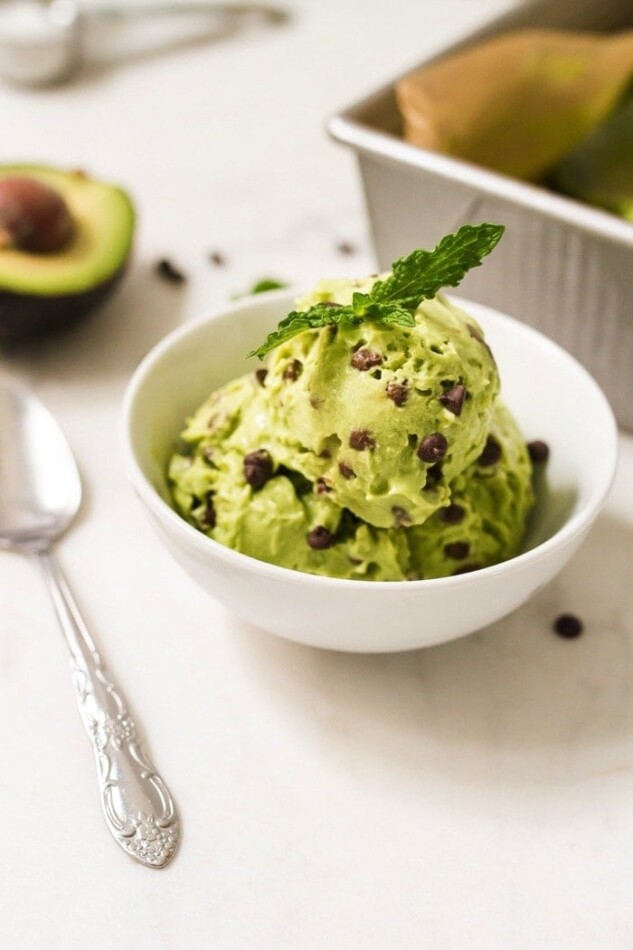

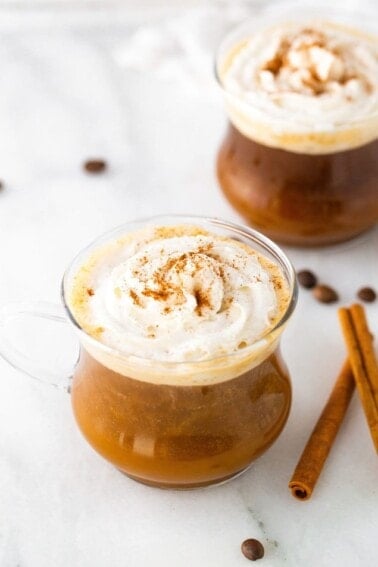
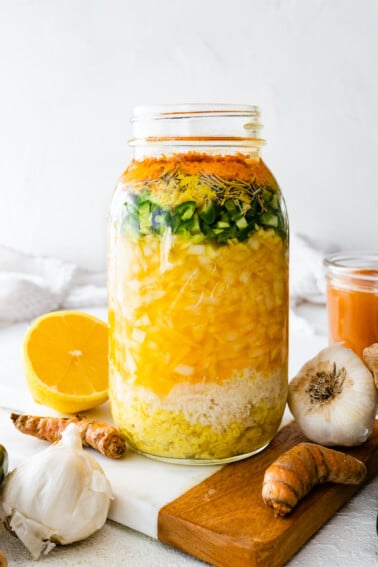
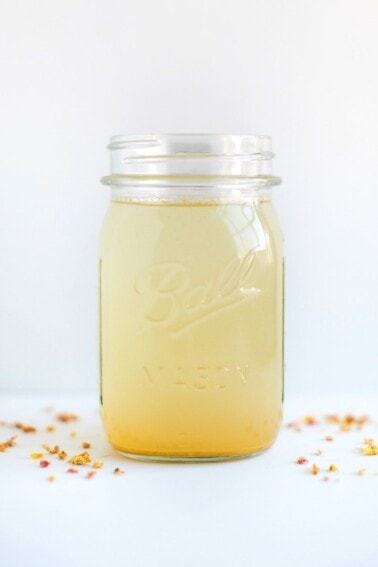
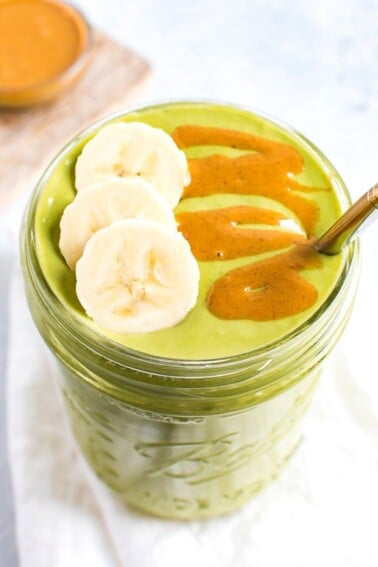
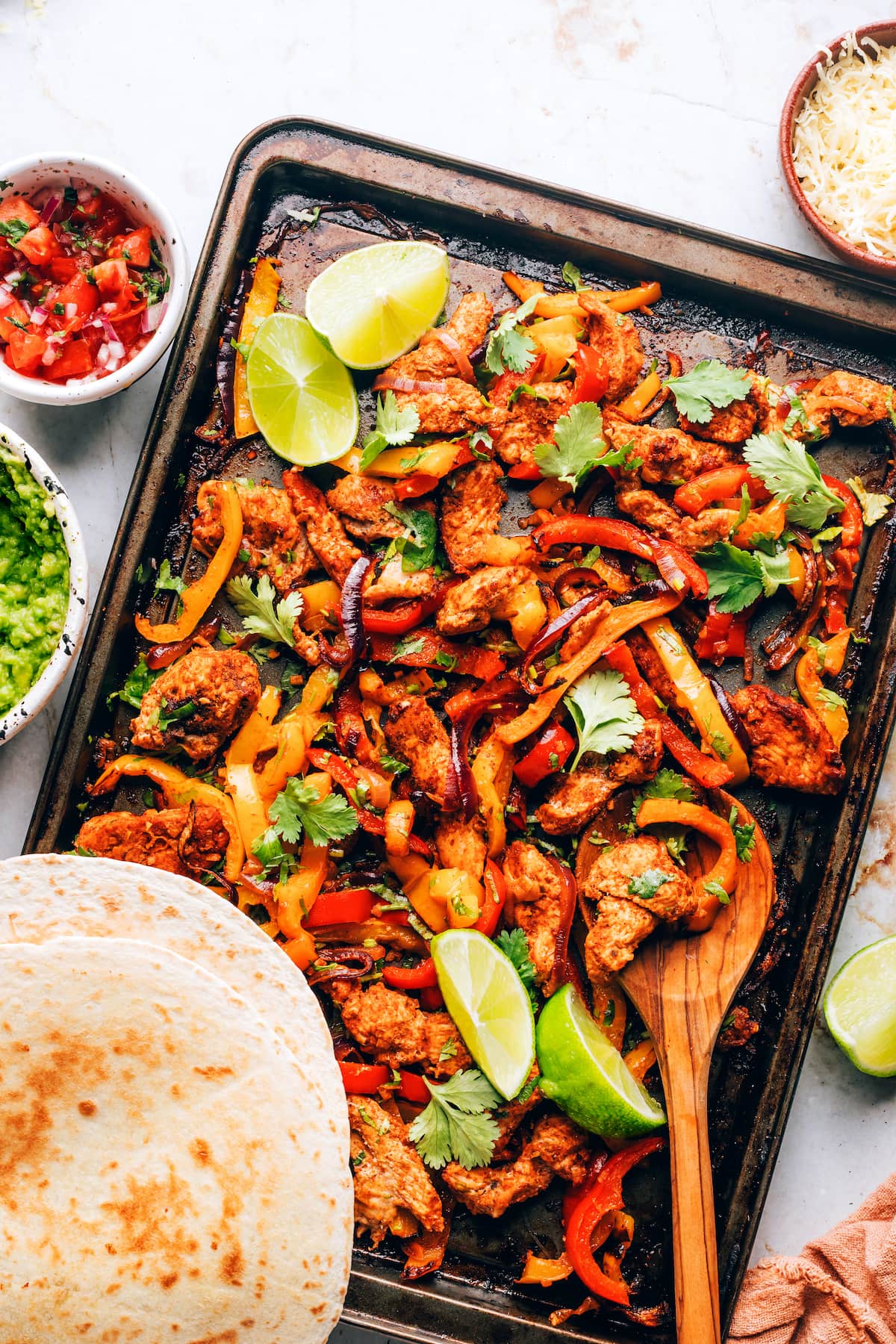






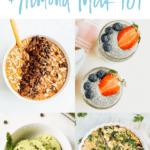
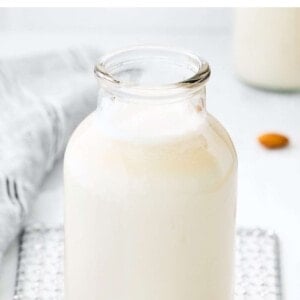
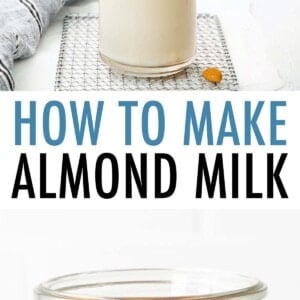
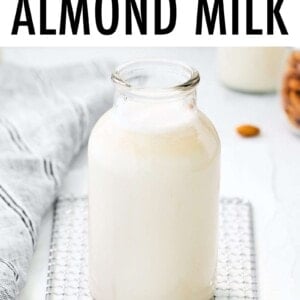
I don’t often think of using almond milk in savory recipes…they all look delicious though! 🙂
Thanks Brittany! I used to only use almond milk in sweeter recipes too, but it works just like regular milk for savory recipes. As long as you don’t try to the use the vanilla… I only say this because I’ve done it before. 🙂
Hi Brittany, should be the ratio of soaked almonds and water 1:4? One cup of almonds? Thank you!!
Yes it’s 1 cup of almonds to 4 cups of fresh water.
Hey Brittany,
Thanks for the useful article.
I am already using this exact recipe to make almond milk and cashew milk. I would love some ideas of what to do with the leftover pulp. 🙂
I include some ideas in the blog post! 🙂
Delicious <3
Thanks, Aileen!!
I also like to make some simple sugar syrup with vanilla and almond extract in it. Almond extract and vanilla helps to bring out the flavor.
Love that, Clay!
I used a similar receipe 45 years ago. Left out the salt, and added a little honey after I stained the almond milk.
Is almond milk good for nursing mothers?
Hey there! Almonds are a great option for nursing mothers and can help increase the creaminess, sweetness, and amount of their breast milk.